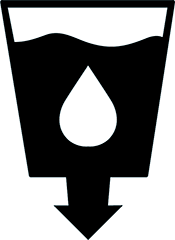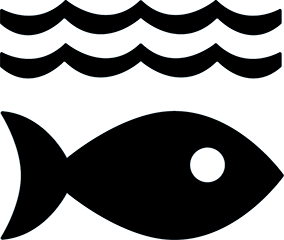UN Sustainable Development Goals Addressed
-

Goal 3: Good Health & Wellbeing
-

Goal 6: Clean Water & Sanitation
-

Goal 13: Climate Action
-

Goal 14: Life Below Water
2019 Global Design Challenge Finalist
This design concept was developed by participants in the Institute’s Global Design Challenge. The descriptions below are from the team’s competition entry materials.
Location: Ithaca, NY, United States
Team members: Anna Gannett, Paulina Villacreces, Paul Gannett, Joey sun
Innovation Details
The UPOD is a mosquito-control device inspired by the mechanism of the carnivorous utricularia vulgaris plant. Current mosquito-control strategies can be harmful to people and the environment, so this team developed the UPod to be an environmentally friendly, self-sustaining, reusable and affordable solution.
1. What is the problem you’re trying to solve and how does your design help?
The effects of climate change include shifting temperature patterns and precipitation events, which are leading to an increase in the geographic range of mosquito populations, putting more people at risk of disease worldwide. Mosquito-borne illnesses, such as dengue and malaria, impact millions. Malaria is the most lethal, responsible for over 600,000 annual deaths. Dengue accounts for an estimated 500,000 annual hospitalizations for severe cases.
In the United States, communities face problems with west nile virus and encephalitis. Natural disasters like Hurricane Harvey can be disastrous when standing water creates perfect conditions for mosquitoes to breed. Current mosquito-control technologies are retroactive, costly, require active maintenance and surveillance, and are harmful to the environment. UPOD is a solar-powered device that provides a preventive solution to mosquito-borne illnesses by responding to the dynamic environment of breeding sites and killing mosquitoes at the larvae stage without the use of chemicals.
2. What makes your design different than previous or current approaches to the problem you’re trying to solve? What are the social, cultural, and/or environmental wins that your startup innovation provides.
UPOD sets itself apart from other mosquito-control approaches in 4 key ways:1) It is a preventative solution because it targets mosquitoes at the larval stage2) Its chemical-free mechanical operation does not require the input of non-renewable chemicals3) It can be applied in areas where other products cannot be used or are not permitted (such as rice fields)4) No constant maintenance or application is required, like most options available in the market
UPOD benefits the health of society through disease prevention, thus improving human quality of life by allowing people to enjoy the outdoors, without having to worry about acquiring mosquito-borne illnesses. Additionally, UPOD benefits the environment by having a minimal impact on the health of the ecosystem through its reliance on non-chemical larvae treatment. Local communities may also benefit from the affordability and effectiveness UPOD provides, thus lessening the tax burden compared to less sustainable current options.
3. How did you apply lessons from living organisms to your design and what difference did that make?
UPOD was inspired by various organisms and mechanisms found around us in nature. One of the main organisms that inspired the UPOD is the bladderwort plant, a carnivorous aquatic plant species which uses vacuous pods on its roots to trap small insect prey. Similar to bladderwort plants, UPOD relies on the renewable energy provided by the sun to perform its basic functions. Unlike the plant, however, UPOD is mobile, moving through the water like a fish to capture its prey. The destructive forces of UPOD’s chemical-free killing mechanism take their inspiration from the power found in ocean vortexes.
These features have helped to create a device that is sustainable and integrates with the natural ecosystem. Nature’s patterns have taught us the significance of simplicity in function by having one feature serve more than one purpose.


